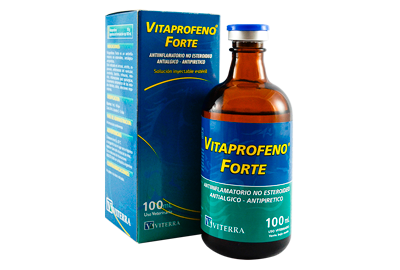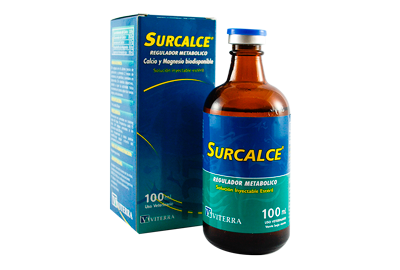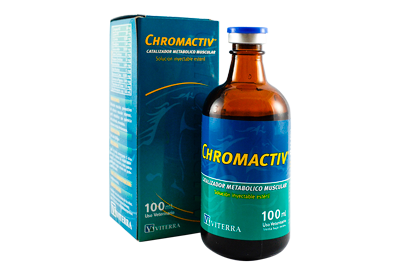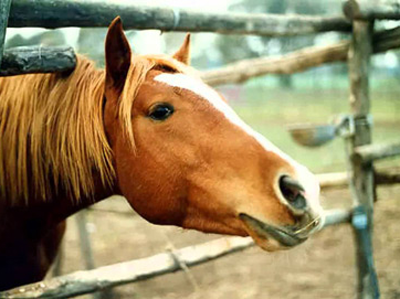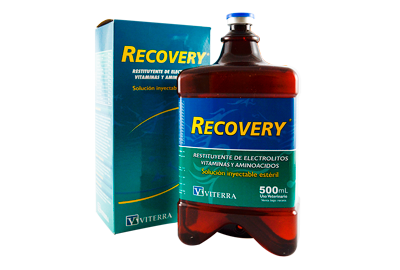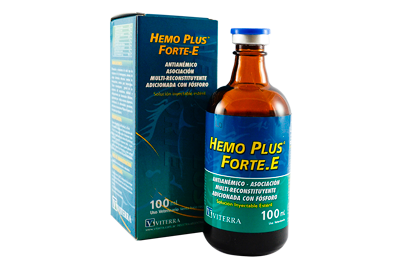Investigation
Equine Adenitis
Technical report: Equine Adenitis
Introduction
This is an acute equine illness caused by the Estreptococus Equi. It produces inflammation of the upper respiratory tract and abscesses on the retropharyngeal and/or mandibular lymph nodes. More frequent clinical symptoms are fever, serous nasal secretion which then turns into mucopurulent and pharyngitis which can be intense and obstruct swallowing.
The recommended treatment consists on an antibiotic therapy based on Penicillin. As Penicillin is a beta-lactam antibiotic (it acts on the bacterium wall) as is Ampicillin. The infected animals were separated into two groups to observe the response to Complex Ampicillin and Sodium Penicillin which was used as control
Materials and Methods
Animals: Six mestizo horses of 400 Kgs of live weight with incipient Adenitis were used. They were separated into two groups of three animals each. Group A received 10.000.000 UI dose of Pure Penicillin (G Sodium Penicillin) every 8 hours, while group B received a total of 5 gr. Of Complex Ampicillin (Sodium and benzathine Ampicillin) every 12 hours. Both treatments lasted 10 days.
Resultados
Rectal temperature: There was only one animal with fever in each group at the moment of diagnosis (39.1 and 40ºC for a horse from A group and one from group B respectively). By day 5 of the treatment, the horse from group A no longer had any fever; meanwhile the horse from group B still had 39.4ºC. By the tenth day of treatment none of the animals of either group had a rectal temperature higher than 37.5ºC.
Nasal discharge: At the moment of carrying out the diagnosis only two animals from group A and one animal from group B showed signs of nasal discharge. On the fifth day of treatment all the horses of both groups showed mucuspurulent nasal discharge. On finishing the antibiotic therapy two horses from each group still presented nasal discharge. In one horse from group B it was very slight but mucuspurulent, while in the other 3 horses it was of the serous type.
Cough reflex: At the beginning of the focus only one horse from group A had positive reflex, while all 3 horses from group B presented positive reflex. After 5 days from starting the treatment no horse from group A had positive reflex while only one from group B did not present positive signs of it. 10 days from the beginning of the antibiotic therapy only two horses from group B showed signs of positive cough reflex.
Lymph nodes (mandibular and retropharyngeal): Only one horse from group B did not show inflamed nodes at the moment when Adenitis was diagnosed, while the remaining horses showed inflamed nodes. This inflammation was not only evident outwardly but it also manifested itself in a convex form on the floor of the guttural pouch (photo 1B). A horse from group A also had a fistula in the guttural pouch (Photo 1A).
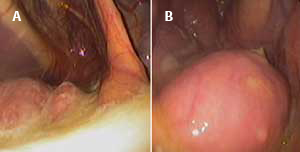
Fig. 1. The 1A shows the empyema produced by the fistula of retropharyngeal node, while 1B shows the node protrucion towards the internal side of the guttural pouch.
On the 5th day of treatment all the horses showed inflammation of the lymph nodes, including one horse which manifested a fistula protruding from one of its retropharyngeal nodes (Photo 2).
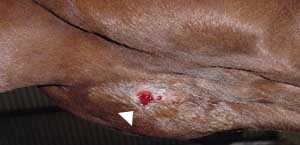
Fig 2: Fistula of left mandibular node (arrow sign) on the fifth day from beginning of the treatment.
After 10 days of administering the antibiotics all the horses from both groups presented slightly inflamed nodes, although this inflammation practically did not deform the base of the guttural pouch (Photo 3B).
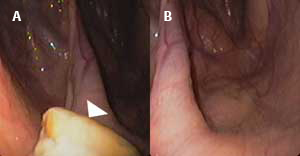
Fig. 3: 3A shows the chondroid (arrow sign) as a consequence of empyema, while in 3B a slight convex form on the base of guttural pouch can still be observed
Debate
Animals treated with Pure Penicillin (A Group) showed a negative cough reflex and normal temperature on the fifth day of treatment while nasal discharge as well the lymph nodes were still inflamed. On the tenth day of treatment only two horses continued with serous mucus while the other three horses from the group still presented slightly inflamed lymph nodes, normal body temperature and negative cough reflex. The horse which showed signs of empyema in the guttural pouch as a consequence of the drainage towards the inside from the retropharyngeal node was treated by washing out the pouch using a solution of vodopivona at 3% for 3 days and the chondroid was removed by endoscopic via.
Animals treated with Complex Ampicillin showed positive cough reflex in two horses and the horse which had begun with 40ºC rectal temperature still continued with fever. Each animal from the group showed nasal discharge and inflamed lymph nodes. On the tenth day of treatment one horse continued with mucus purulent nasal secretion and two animals went on with positive cough reflex. No animals showed signs of fever and all of them still had slightly inflamed nodes.
Conclusion
To conclude, horses treated with Complex Ampicillin (B Group) showed a good response to the treatment although less rapid than the group treated with Pure Penicillin which is the chosen antibiotic for this illness, since 10 days after finishing the antibiotic therapy(after 20 days from beginning of the illness) all the animals from both groups had recovered. On the other hand, the administering of Complex Ampicillin every 12 hours makes the treatment easier and cheaper. It is important to point out that the auto-vaccine which is highly recommended for this illness was not given so as to avoid covering up the action of the antibiotic.
Other investigations
Official Certificate N°013-2016 emitted by SENASA
GMP - Good Manufacturing Practice for Veterinary Drugs
Viterra
Contact
- (+54 11) 4855 9410
- info@laboratoriosangroinsumos.com
- Caldas 175, Capital Federal, Buenos Aires, República Argentina
